The Slack-Leader Cast
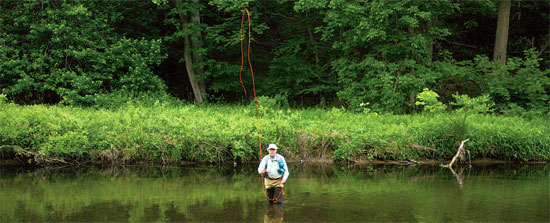
Begin with an elevated forward cast.
TO MAKE A GOOD slack-leader cast, I don’t advocate casting with high line speed and stopping the rod sharply to create a shock in order to put slack in the leader. When you shock the rod, it’s often hard to tell where the fly is going to go, and you are actually pulling some of the curves out of your line.
I prefer to make a controlled soft cast with no shock. Begin with an elevated forward cast, apply power softly, and after the loop is formed, drop the rod tip to the surface of the water. This gentle cast is accurate and puts lots of slack in your leader and line. If a high-speed cast is made, the line recoils at the end, jumps back, and ruins the delivery. If you aim the forward cast high enough, this becomes a stack cast. The principles are the same, though you can make this cast without a low backcast.
The key is to stop and drop your rod tip gently to the water. The rod must be lowered immediately after the speed-up-and-stop. If not, the line held aloft by the rod tip will sag back, pulling the waves from the line.
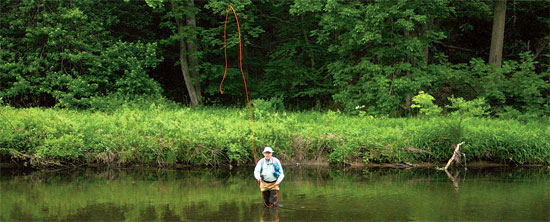
The higher the angle at which you stop, the more waves will develop in the front of the fly line and the leader.
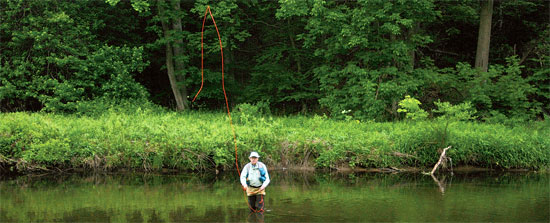
The moment the rod speeds up and stops, begin dropping the rod.
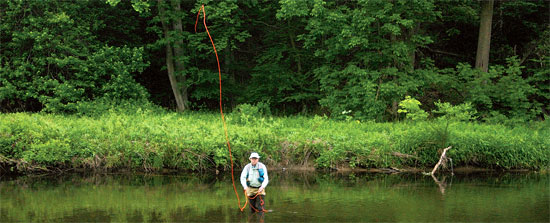
Continue to lower the rod.
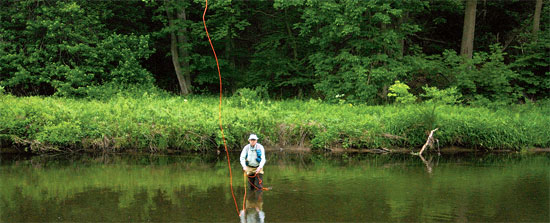
As the front of the line begins to fall, the rod tip should be close to the surface.
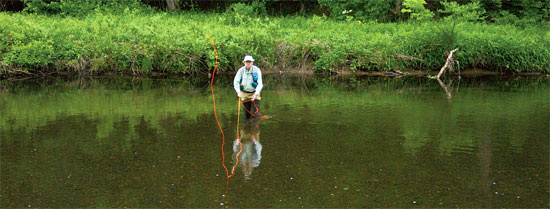
The front portion of the line and the leader are falling vertically.
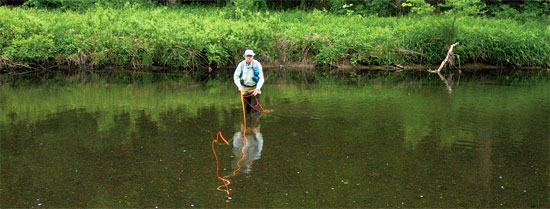
This causes the front of the line and the leader to fall in soft, desirable waves.
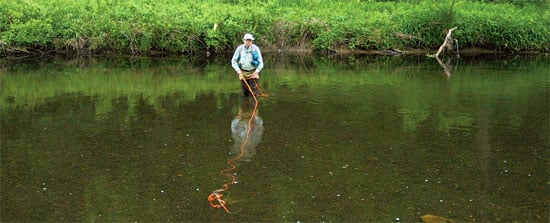
The fly is falling vertically.
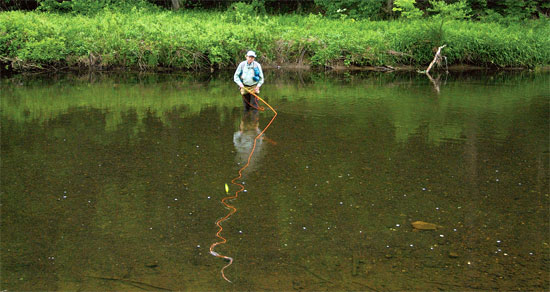
This much slack in the front of the fly line and leader ensures a drag-free drift. There is a lot of slack in the line, but the fly has landed accurately.











